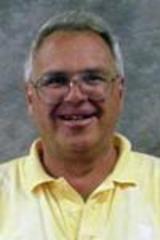Richard F. Casten
D. Allan Bromley Professor of Physics
 Rick Casten, B.S. College of the Holy Cross, M.S., Ph.D. Yale University, faculty member at Yale since 1995: Over the span of more than forty years you have been a leading world figure in nuclear physics, first while at the Brookhaven National Laboratory and then while at Yale as director of the Wright Nuclear Structure Laboratory. Your organizational abilities have made you a sought-after candidate for every national and international organization in your field. Chair of the DOE/NSF Nuclear Science Advisory Committee (NSAC), chair and member of scientific advisory committees in France (Orsay), Germany (Darmstadt, GSI), and Japan (Tokyo, RIKEN)—you have been all of these and many more. Your vision and advice have been crucial for the future of your field, especially for planning its development in the twenty-first century through the construction of large facilities in the United States (the Facility for Rare Isotope Beams, FRIB, at Michigan State University) and abroad (the FAIR facility at GSI in Germany; RIBF at RIKEN, Japan; and Rare Isotope Science Project, RISP, in Korea). Your community service has made you one of the most famous nuclear physicists in the world, from South to North America, from Europe to Asia.
Rick Casten, B.S. College of the Holy Cross, M.S., Ph.D. Yale University, faculty member at Yale since 1995: Over the span of more than forty years you have been a leading world figure in nuclear physics, first while at the Brookhaven National Laboratory and then while at Yale as director of the Wright Nuclear Structure Laboratory. Your organizational abilities have made you a sought-after candidate for every national and international organization in your field. Chair of the DOE/NSF Nuclear Science Advisory Committee (NSAC), chair and member of scientific advisory committees in France (Orsay), Germany (Darmstadt, GSI), and Japan (Tokyo, RIKEN)—you have been all of these and many more. Your vision and advice have been crucial for the future of your field, especially for planning its development in the twenty-first century through the construction of large facilities in the United States (the Facility for Rare Isotope Beams, FRIB, at Michigan State University) and abroad (the FAIR facility at GSI in Germany; RIBF at RIKEN, Japan; and Rare Isotope Science Project, RISP, in Korea). Your community service has made you one of the most famous nuclear physicists in the world, from South to North America, from Europe to Asia.
Despite the travel involved in your role as a leader of the community, you are also known as a superb mentor. Your students and postdoctoral fellows occupy important positions around the world, a tribute to your dedication to them and to the time you have spent teaching them both the fundamentals of nuclear physics and its latest applications. Your book, Nuclear Structure from a Simple Perspective, is used as a graduate textbook in many universities in the Americas, Europe, and Asia, while one of the courses you taught, Understanding the World through Physics, has been greatly appreciated and largely oversubscribed by undergraduate science majors.
Last but not the least, from 1967 to this day you have published 690 refereed articles and invited conference talks. From the late 1970s to today, your research has been focused on the experimental search for dynamical symmetries in nuclear physics. In 1978 you provided evidence for a symmetry in nuclei, called SO(6), in 1981 for another one, called SU(3); and as recently as 2001 you provided evidence for yet another type of symmetry, called critical point symmetry, which describes nuclei at the critical point of a phase transition. For this work, you have been awarded the American Physical Society 2011 Tom W. Bonner Prize in Nuclear Physics (the most prestigious prize in your field) and, among other prizes and awards, two honorary doctorates.
Avid sportsman and devoted baseball fan, despite having had severe asthma your entire life, you challenged yourself to achieve the adventure medical professionals thought was unwise and perhaps impossible for you: a climb to the Mount Everest base camp in Tibet. “I love mountains and glaciers,” you have said. As you retire from active teaching, but not from research, your colleagues at Yale and in laboratories around the world wish you the triumph of conquering many more “mountains and glaciers”—in nuclear physics and in life.
Tribute Editor: Penelope Laurans